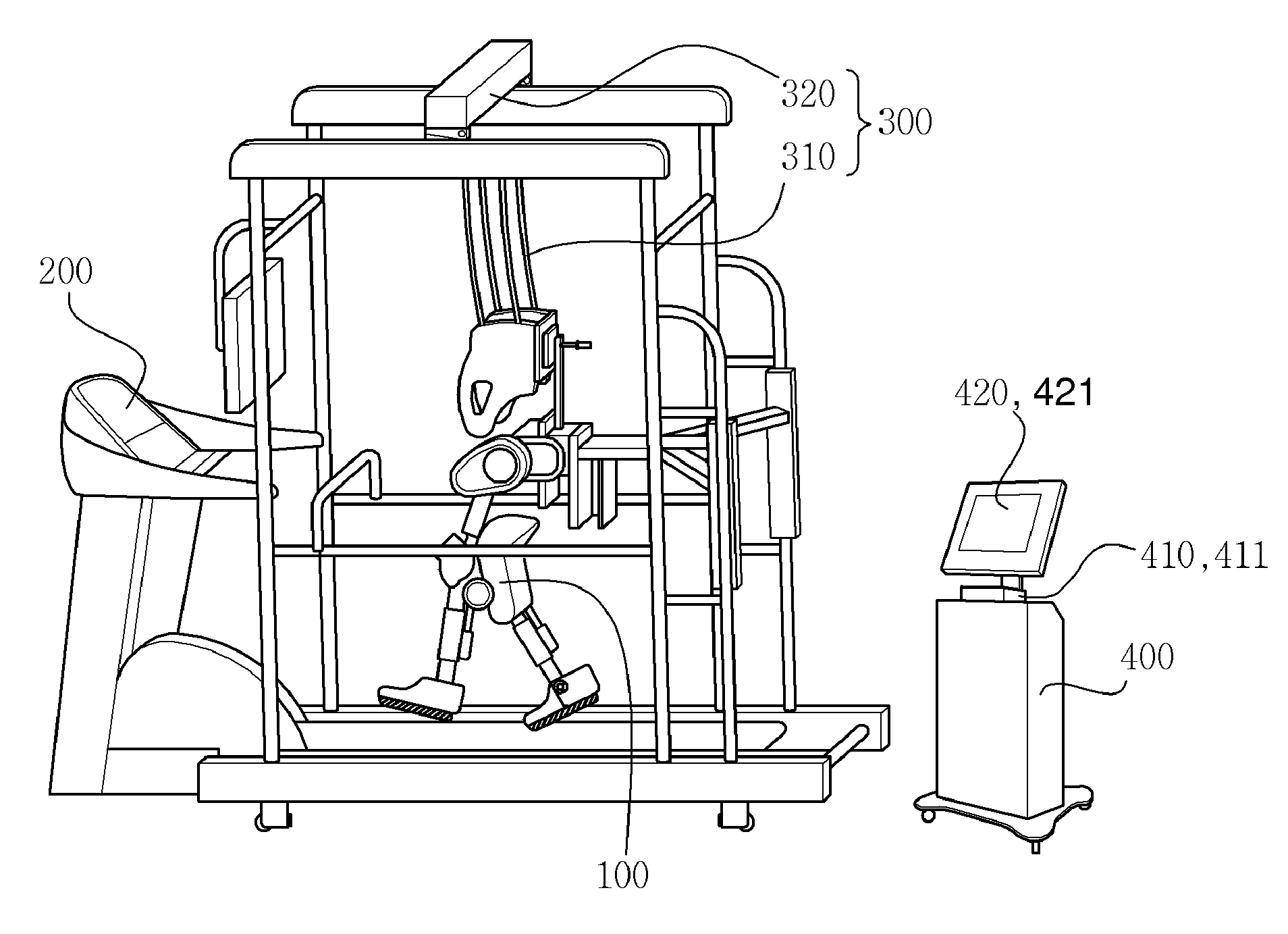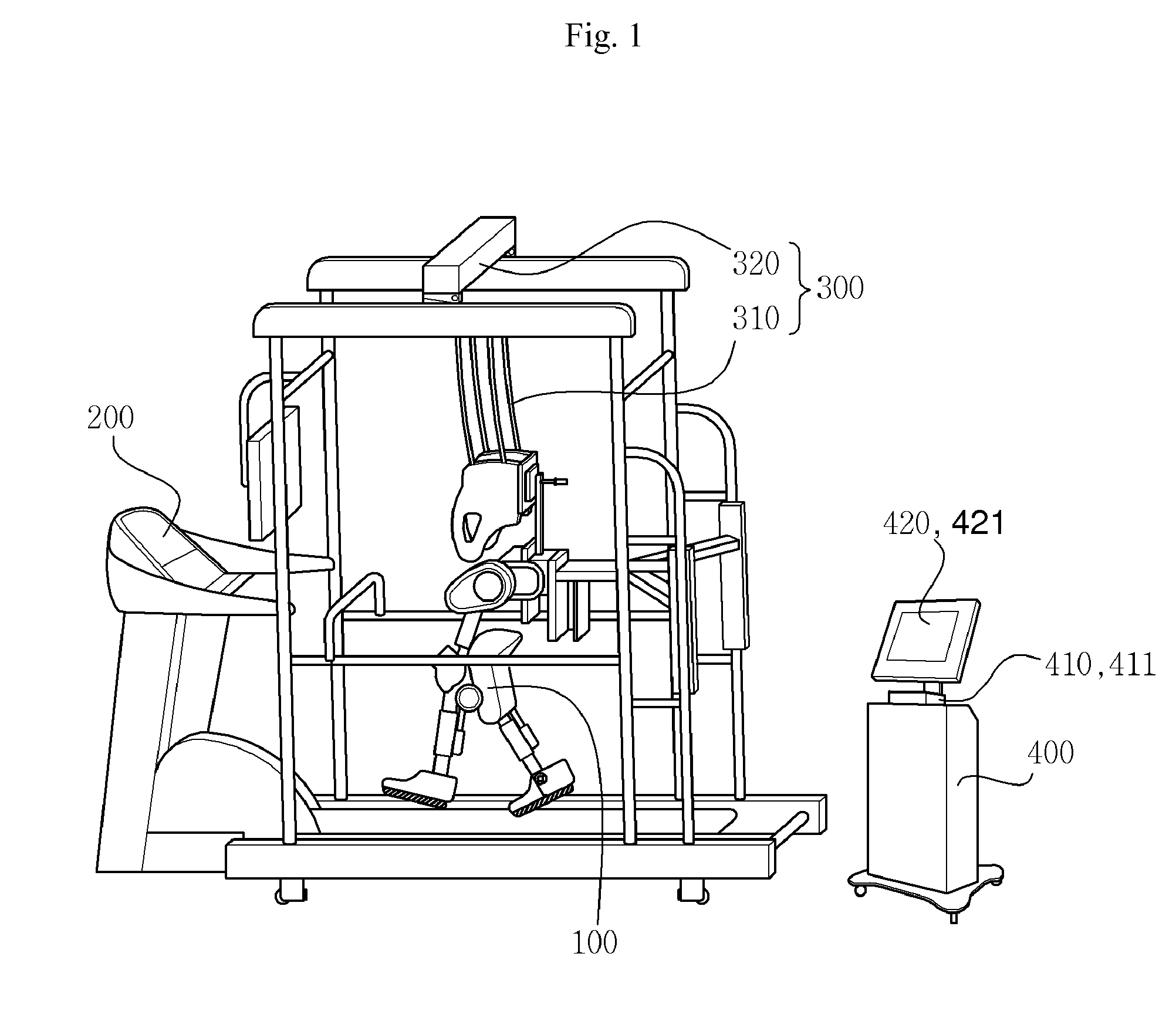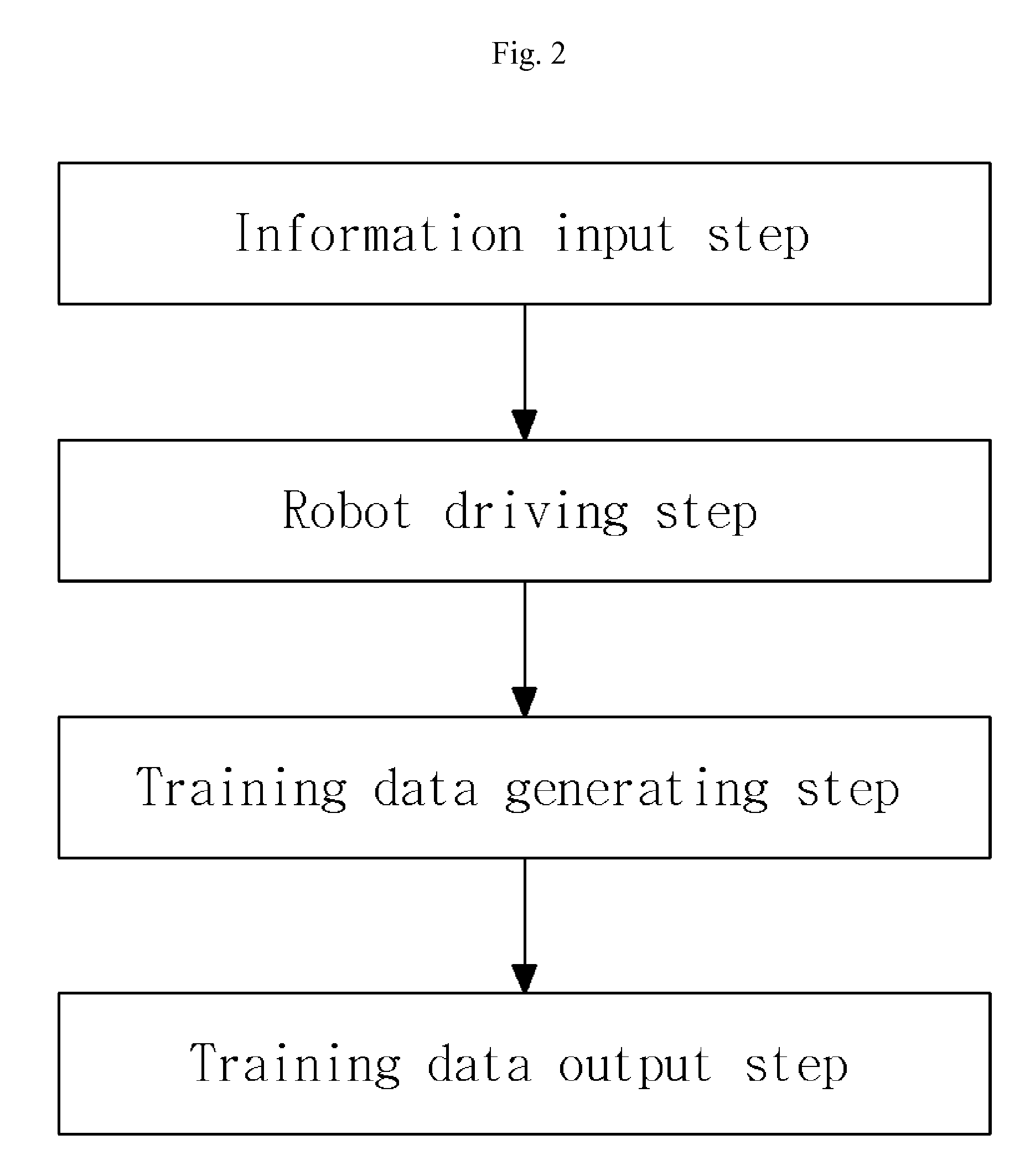Robot for gait Training and Operating Method Thereof
a robot and gait training technology, applied in the field of robots for gait training and an operating method thereof, can solve the problems of inconvenient conventional walking-assist robots, errors in adjustment, and difficult to achieve effective gait training, so as to improve the effectiveness of time and manpower, prevent leg drag, and prevent error occurren
- Summary
- Abstract
- Description
- Claims
- Application Information
AI Technical Summary
Benefits of technology
Problems solved by technology
Method used
Image
Examples
Embodiment Construction
[0051]A robot for gait training and an operating method thereof in accordance with the present invention will be described more fully hereinafter with reference to the accompanying drawings, in which embodiments of the invention are shown.
[0052]FIG. 1 is a schematic view of a robot for gait training in accordance with a first embodiment of the present invention, FIG. 2 is a flowchart showing an operating method of a robot for gait training in accordance with the first embodiment of the present invention, and FIG. 3 is a graph of an example of an output displayed on a screen, showing a speed and angle of a hip joint and a speed and angle of a knee joint, which are inputted during training in real time, and pre-input information about a standardized walking pattern appropriate for the training of the walking trainee.
[0053]In addition, FIG. 4 is a flowchart showing an operating method of a robot for gait training in accordance with a second embodiment of the present invention, FIG. 5 i...
PUM
 Login to View More
Login to View More Abstract
Description
Claims
Application Information
 Login to View More
Login to View More - R&D
- Intellectual Property
- Life Sciences
- Materials
- Tech Scout
- Unparalleled Data Quality
- Higher Quality Content
- 60% Fewer Hallucinations
Browse by: Latest US Patents, China's latest patents, Technical Efficacy Thesaurus, Application Domain, Technology Topic, Popular Technical Reports.
© 2025 PatSnap. All rights reserved.Legal|Privacy policy|Modern Slavery Act Transparency Statement|Sitemap|About US| Contact US: help@patsnap.com



